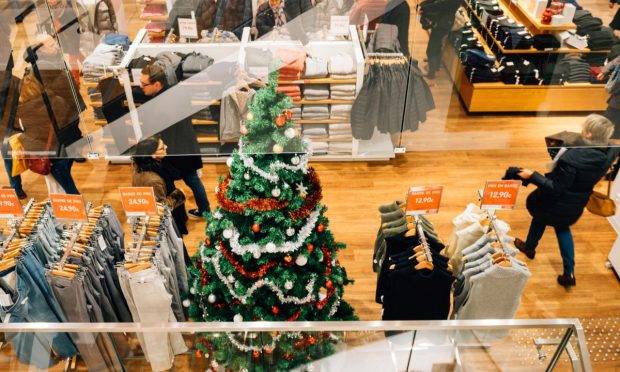Consumer Confidence Bruised by Economic Realities

The twin specters of inflation and rising interest rates continue to spook consumer confidence.
After losing ground in October, U.S. consumer confidence is doing even worse in November, as soaring prices impact their shopping experiences and cast a pall over the holidays.
A New Low
The November edition of PYMNTS’ Consumer Inflation Sentiment Report finds that one-third of consumers are having trouble paying their bills, and 50% of consumers say inflation has soured their outlook on their economic future.
These unfortunate economic realities have impacted and arguably even shaped the start of this year’s holiday shopping season, with a full 56 million consumers saying that they have no plans to do any holiday shopping at all this year. As reported by PYMNTS, 7 million fewer consumers went shopping on Black Friday this year versus during 2021’s big discount-fueled holiday.
Still, for those consumers that did go shopping, Black Friday remains one of the most important days — especially for those living on a budget or paycheck to paycheck. Among the consumers who intend to shop during this year’s holiday season, a greater portion made their purchases on Black Friday 2022 than ever before, viewing the savings retailers offer as a necessity in these trying times.
“The economy has lost momentum as the year winds down. Consumers’ expectations regarding the short-term outlook remained gloomy,” said Lynn Franco, senior director of economic indicators at the Conference Board. “The combination of inflation and interest rate hikes will continue to pose challenges to confidence and economic growth into early 2023.”
Inflation Eating Paychecks
Rising prices continue to be the primary concern for two-thirds of consumers. As a result, those consumers who did shop or who plan to buy gifts this holiday have turned to financing solutions and flexible payment features to help alleviate the pain of economic realities.
PYMNTS research reveals that nearly one in three shoppers tapped credit cards or used buy now, pay later (BNPL) and other installment options to finance their Black Friday purchases, with some shoppers even resorting to applying for loans. Consumers who looked to these payment and financing solutions to take inflation’s sting out of their paychecks did so for a staggering 50% of their purchases.
Unsurprisingly, the PYMNTS study found that millennial consumers and those individuals with trouble paying their bills as a result of the economic climate were the most likely to turn to alternative financing options in order to bring home a little holiday cheer. Forty-five percent of both groups used BNPL, credit or loans to fuel the purchase of more than half of their items.
Consumers are also more pessimistic about their short-term income prospects. Being short on cash is another big reason that consumers are choosing to avoid holiday shopping altogether, with 29% saying they simply do not have enough money to go on the type of shopping spree they may have in years past during better economies, and 15% saying that the deals simply are not good enough to be motivating to spend what little cash they do have on hand.
Entering a Recession
When it rains, it pours; and while the wealthiest respondents surveyed by PYMNTS were most likely to believe a recession is coming but not here quite just yet, a hair under half of those with an income less than $50,000 believe that an economic recession has already hit, and we’re in the midst of it.
What’s worse, Americans across all income brackets expect this economic instability to last for a long time — on average, at least until spring 2024. That means another year and a half of unsustainable gas and food prices, and a longer economic shadow cast by hurt consumer confidence.
The purchase behavior behind big ticket items will likely be put on ice, as generationally high inflation forces lower-income consumers to rely on credit cards and flexible financing options as well as depletes their savings. Americans are resilient, but borrowing costs are growing, which has driven a shift in focus from items to like large appliances and cars to the simple necessities of daily life.
Affluent consumers, as always, will likely to continue to flex their greater purchasing power.
For more information on how consumer sentiment, economic realities, and innovative financing solutions will together define this year’s holiday shopping season, download PYMNTS’ free “Black Friday 2022” report.